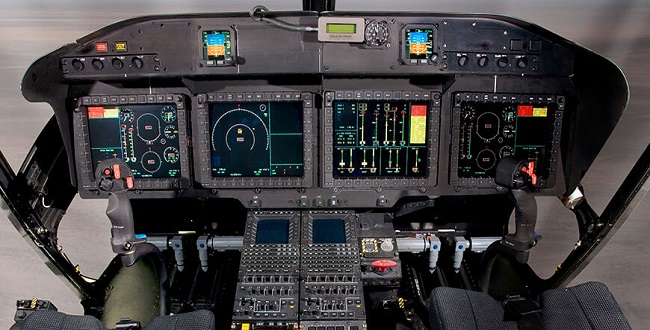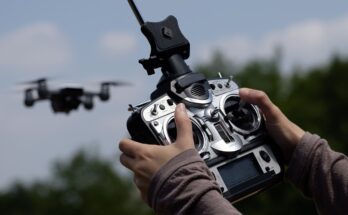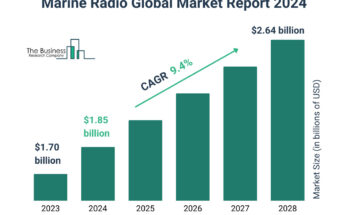Enhanced Situational Awareness and Safety, Improved Mission Effectiveness, Cost Efficiency and Lifecycle Management and Integration of Advanced Technologies are factors driving the Global Military Aircraft Digital Glass Cockpit Systems market in the forecast period 2024-2028.
According to TechSci Research report, “Global Military Aircraft Digital Glass Cockpit Systems Market – Industry Size, Share, Trends, Competition Forecast & Opportunities, 2028”, the Global Military Aircraft Digital Glass Cockpit Systems Market stood at USD 188 million in 2022 and is anticipated to grow with a CAGR of 5.15% in the forecast period, 2024-2028. An airplane cockpit with a digital glass cockpit, commonly referred to as an electronic flight information system (EFIS) or cockpit display system (CDS), is one without the traditional analog dials and gauges. By allowing the use of many displays powered by flight management systems that may be changed (multi-function display) to display flight information as needed, a digital glass cockpit streamlines aircraft operations and navigation. LCD panels are used in cutting-edge digital glass cockpit systems to show essential flying data. Primary flight displays (PFDs), engine indicators and crew alerting systems (EICAS), and multifunction displays (MFDs) are the foundation of digital glass cockpit display systems. This makes it possible to replace mechanical flight instrument gauges with graphical representations of data from both onboard and outside sources.
The Global Military Aircraft Digital Glass Cockpit Systems Market is a pivotal and rapidly evolving segment within the broader defense aviation industry. These sophisticated cockpit systems have become a cornerstone of modern military aircraft, offering advanced technologies that significantly enhance pilot situational awareness, mission capabilities, and overall operational efficiency. One of the driving forces behind the continuous evolution of Military Aircraft Digital Glass Cockpit Systems is the ever-increasing complexity of modern warfare. As conflicts become more dynamic and multifaceted, military aircraft need to be equipped with advanced avionics and mission systems to ensure optimal performance in a range of scenarios. The transition from traditional analog cockpit displays to digital glass cockpit systems has been instrumental in achieving this objective. These systems provide military pilots with a holistic view of critical flight and mission information, significantly enhancing their situational awareness and decision-making capabilities. As a result, pilots can respond more effectively to evolving threats and operational requirements, whether during air combat, reconnaissance, transport, or other mission profiles.
Browse over market data Figures spread through 180 Pages and an in-depth TOC on “Global Military Aircraft Digital Glass Cockpit Systems Market.”
https://www.techsciresearch.com/report/military-aircraft-digital-glass-cockpit-systems-market/19362.html
Key market trends in the Global Military Aircraft Digital Glass Cockpit Systems Market reveal the direction in which this sector is headed. One prominent trend is the adoption of Integrated Modular Avionics (IMA) in cockpit systems. IMA is revolutionizing how avionics functions are integrated into a common platform, offering greater flexibility, scalability, and adaptability. This approach allows military aircraft to readily accommodate new technologies and changing mission requirements, ultimately extending the operational life and mission capabilities of these platforms. Moreover, the modular design of IMA systems simplifies maintenance and upgrades, contributing to cost efficiency in the long term and ensuring that military aircraft remain at the cutting edge of avionics technology.
Enhancing the Human-Machine Interface (HMI) is another pivotal trend in the market. HMI has a profound impact on pilot performance and effectiveness. Advanced features, such as Head-Up Displays (HUDs) and Helmet-Mounted Displays (HMDs), project critical flight and mission information directly onto the pilot’s line of sight, reducing the need to look down at instruments. This not only improves situational awareness but also minimizes cognitive load, allowing pilots to focus on mission-critical tasks. Additionally, touchscreen controls, gesture and voice recognition, and augmented reality overlays are becoming integral components of cockpit systems. These features are designed to enhance operational efficiency and facilitate interactions between the pilot and the aircraft’s avionics, contributing to a more agile and effective military aircraft.
In the age of digitization, the issue of cybersecurity has become a paramount concern in the design and implementation of Military Aircraft Digital Glass Cockpit Systems. With the increasing connectivity of avionics systems and the use of digital technologies, military organizations and manufacturers are investing heavily in protecting these systems from cyber threats. Robust cybersecurity measures, including intrusion detection, encryption, and secure data communication protocols, are being implemented to safeguard sensitive data and ensure that aircraft systems remain uncompromised during missions. Furthermore, redundancy and resilience in cockpit systems are being developed to mitigate potential cyberattacks. By enabling a seamless transition to backup systems in the event of a security breach, the mission can continue with minimal disruption, reinforcing the aircraft’s readiness and operational integrity.
Major companies operating in Global Military Aircraft Digital Glass Cockpit Systems Market are:
- Astronautics Corporation of America
- Elbit Systems Ltd
- Transdign Group
- Honeywell International Inc.
- Garmin Ltd
- Raytheon Technologies Corporation
- Thales Group
- L3Harris Technologies Inc.
- Safran SA
Download Free Sample Report
https://www.techsciresearch.com/sample-report.aspx?cid=19362
Customers can also request for 10% free customization on this report.
“The Global Military Aircraft Digital Glass Cockpit Systems Market is undergoing significant transformation, driven by advanced technologies and evolving military requirements. These systems, designed to enhance pilot situational awareness and mission capabilities, are witnessing a shift towards integrated modular avionics (IMA), improving adaptability and scalability. The focus on human-machine interfaces (HMI) with features like Head-Up Displays (HUDs) and augmented reality overlays is revolutionizing pilot interactions and cognitive load. Ensuring robust cybersecurity is a top priority, protecting sensitive data and fostering resilience against cyber threats. Artificial intelligence and machine learning are enabling data-driven insights and predictive maintenance, optimizing aircraft readiness. Retrofit programs and modular upgrades offer cost-effective solutions, modernizing aging military aircraft while considering sustainability. The market’s ongoing growth hinges on staying at the forefront of technology, security, and adaptability to meet evolving mission requirements in modern warfare.,” said Mr. Karan Chechi, Research Director with TechSci Research, a research-based management consulting firm.
“Military Aircraft Digital Glass Cockpit Systems Market – Global Industry Size, Share, Trends, Opportunity, and Forecast, Segmented By System Type (Multi-Functional Display Systems, Primary Flight Display, Engine-Indicating & Crew Alerting System (EICAS) Display), By System Type (Fighter Jet, Transport Aircraft, Helicopter), By Region, By Competition, 2018-2028”, has evaluated the future growth potential of Global Military Aircraft Digital Glass Cockpit Systems Market and provides statistics & information on market size, structure and future market growth. The report intends to provide cutting-edge market intelligence and help decision makers take sound investment decisions. Besides, the report also identifies and analyzes the emerging trends along with essential drivers, challenges, and opportunities in Global Military Aircraft Digital Glass Cockpit Systems Market.
Contact
Mr. Ken Mathews
Techsci Research LLC
420 Lexington Avenue, Suite 300,
New York, United States- 10170
Tel: +13322586602
Email: [email protected]
Website: www.techsciresearch.com




